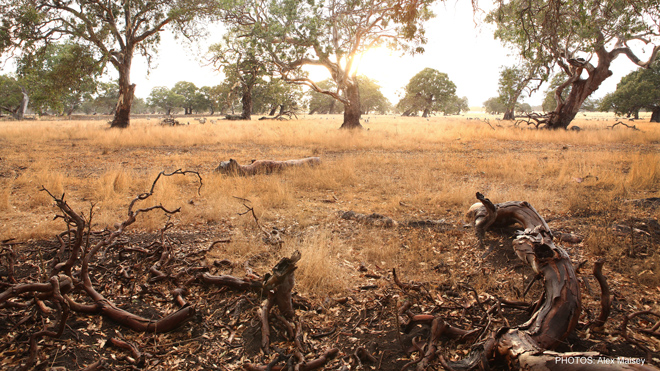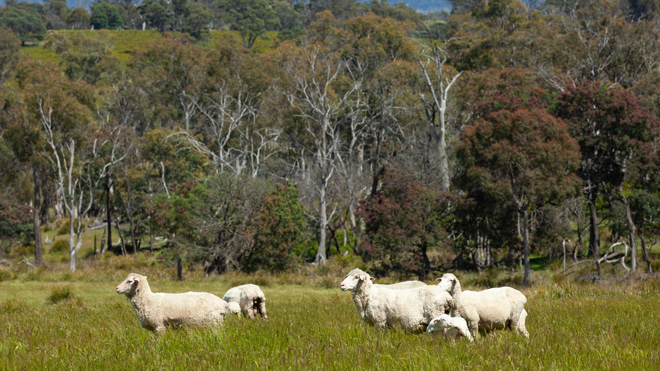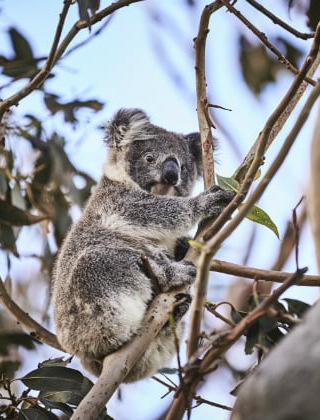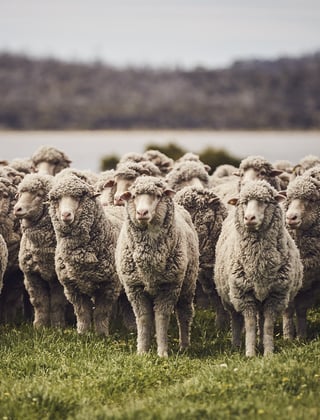Growers supporting Australia's biodiversity

With sheep grazing about 20% of all Australian agricultural land, woolgrowers play an important role in protecting Australia’s biodiversity. AWI-funded R&D is developing a cost-efficient method for woolgrowers to generate reliable metrics of farm-scale biodiversity management to help them showcase their contributions to biodiversity conservation.
Agricultural landscapes, particularly grazing lands, are critical for conserving Australia’s biodiversity because designated conservation parks and reserves alone are not enough to ensure the survival of all native species and ecosystems. Conserving biodiversity is therefore largely dependent on the actions taken by farmers in managing their land.
“With sheep grazing more than 85 million hectares, which is 20% of all Australian agricultural land, sheep and wool producers play a critical role in biodiversity conservation in Australia,” said Dr Alex Maisey of La Trobe University’s Research Centre for Future Landscapes, who is leading AWI-funded research into biodiversity on wool-growing properties as part of the Farming for the Future program.
“As Farming for the Future is demonstrating, woolgrowers can support diverse ecosystems and maintain agricultural productivity and profitability through sustainable land management practices.
Diverse plant and animal communities provide essential ecosystem services, including pollination, pest control, shelter, and maintenance of healthy soil and water. Diverse pollinator populations enhance crop yields, while natural enemies of pests reduce the need for chemical interventions. Healthy soil and water cycles supported by biodiversity ensure long-term agricultural productivity.
“Maintaining biodiversity on farms not only supports the environment but also offers financial and well-being benefits for farmers.”
Dr Alex Maisey, La Trobe University
The La Trobe-led research shows that there are many on-ground management actions that woolgrowers can adopt that will improve biodiversity on their farms:
- Retaining remnant vegetation: Preserving remnants of native vegetation, scattered paddock trees, and native grasslands is the single most effective way to support biodiversity. These areas provide essential habitats for a wide variety of native species.
- Protecting and enhancing riparian zones: Preserving, fencing and revegetating areas adjacent to waterways (termed ‘riparian zones’) enhances both in-stream and terrestrial biodiversity. These actions are cost-effective and lead to improved ecological function and condition (think water quality, soil conservation).
- Planting shelterbelts: Shelterbelts and windbreaks provide production benefits and can increase biodiversity, especially when they are wide (at least 20 metres), structurally complex (layered vegetation levels), and connected to remnant vegetation patches.
- Revegetation: High-quality revegetation will bring species back to the farm. Less mobile species may require corridors or stepping-stones of native vegetation to colonise revegetated areas.
- Grazing native pastures: Native pastures support diverse invertebrate communities and increase vertebrate biodiversity. The presence of paddock trees in pastures further enhances their conservation value.
- Rotational grazing: Rotational or timed grazing can improve the cover and composition of native grasses and forbs, increasing invertebrate diversity and abundance and other animals that feed on them, such as birds, reptiles and bats.
- Reducing chemical inputs: Inorganic fertilisers knock out many native plant species and alter the environment to favour introduced species. Pesticides and rodenticides either directly or indirectly kill insects, birds, bats, fish and reptiles. Low input farming can reverse these impacts over time.
“By embracing sustainable land management practices that support biodiversity, woolgrowers will not only enhance their farms' resilience and contribute significantly to Australia's conservation efforts, they will also meet increasing market demands for sustainability.”
Dr Alex Maisey, La Trobe University

Remnant vegetation provides ecosystem services that help maintain healthy pastures, for example, by bolstering populations of beneficial arthropod predators on the farm.
Measuring on-farm biodiversity
Despite the benefits of woolgrowers’ actions to preserve and improve on-farm biodiversity, there is a lack of data on their implementation across the industry. Without this data, assessments of biodiversity management remain largely anecdotal.
Furthermore, there is growing pressure from both international and domestic markets for primary producers to not only reduce their environmental impact but also demonstrate their sustainability credentials. As a result, there is a need for farm-scale biodiversity measures to help farmers highlight their contributions to biodiversity conservation and showcase their environmental performance.
However, collecting survey farm-scale data on plants and animals is time-consuming and expensive. AWI has therefore been investing in ways farmers can use surrogates to demonstrate their management of biodiversity.
The La Trobe team have developed a robust and cost-efficient method to generate reliable metrics for assessing biodiversity management on wool-growing farms. It is currently at proof of concept stage.
The work involved devising specific metrics for five key components of biodiversity management and examining their relationship with survey data of native plant and bird populations collected from 50 farms in southeast Australia. The five metrics used to calculate the ‘Biodiversity Management Index’ (BMI) are:
- Extent of natural habitats across the farm (i.e. woodland, forest and grassland assessed using a combination of satellite imagery and farm management data)
- Condition of riparian zones (assessed using a combination of satellite imagery and farm management data)
- Ground cover (represented by average minimum ground cover measured over five years from satellite imagery)
- Diversity of habitat types on the farm (termed ‘heterogeneity’ assessed by satellite imagery); and
- Intensity of inputs (e.g. fertilisers, pesticides, irrigation, assessed using farm management data).
Each metric is scaled from 0 to 1 such that the final ‘generic’ BMI is a score out of 5.
Through calibration using empirical survey data, the researchers determined appropriate weightings for each of the five metrics for different species groupings (e.g. woodland birds, groundcover plants), enabling them to create a ‘taxon-specific’ ‘Biodiversity Management Index’ for each species group.
“We then calculated the BMI for 70 wool-producing farms participating in the Farming for the Future program. This allowed us to assess contemporary biodiversity management practices among this cohort of woolgrowers, offering valuable insights into the industry’s efforts and areas for improvement,“ Dr Maisey said.
In general, the 70 wool producers in the Farming for the Future project were performing very well in terms of Intensity and Ground Cover, well for Heterogeneity, moderately for Riparian Condition and there was room for improvement in Habitat Extent.
“A key finding was that when we used the BMI to predict species richness, many wool-growing farms were likely to be supporting a diverse community of woodland birds and native plants. We also found a positive relationship between species richness and the amount of wool produced per hectare, demonstrating that biodiversity and wool production can co-exist,” Dr Maisey explained.
The BMI serves as a critical tool for understanding and enhancing biodiversity conservation on agricultural lands, demonstrating the proactive role of sheep farmers in supporting Australia's biodiversity.
This article appeared in the September 2024 edition of AWI’s Beyond the Bale magazine. Reproduction of the article is encouraged.















